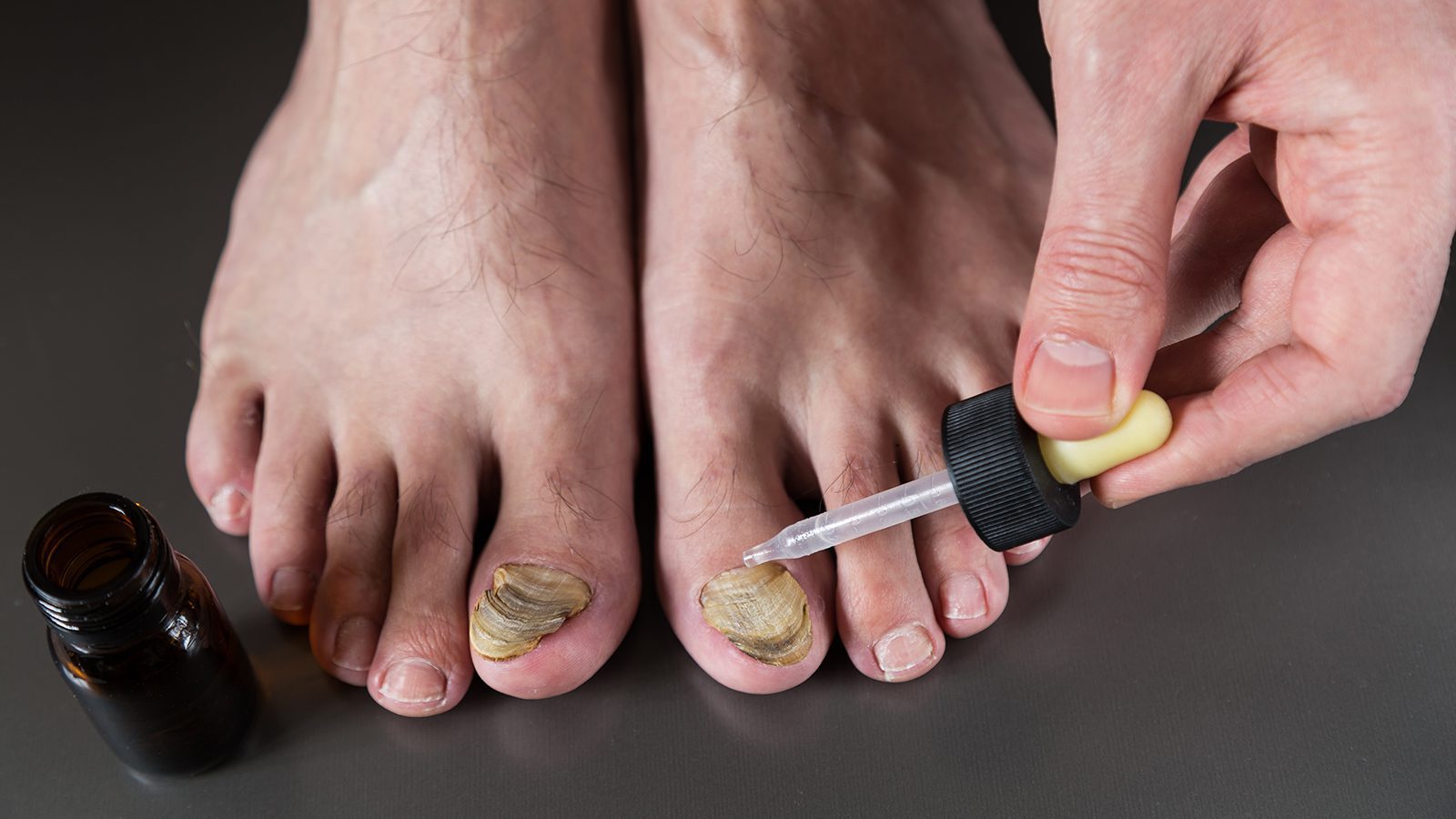If your toes seem discolored or thicker than usual, it could indicate toenail fungus. It’s a common occurrence that can spread if you don’t fix it. Understanding the causes can help you practice better foot care and heal the fungal infection before it worsens or spreads.
Toenail fungus isn’t typically harmful and usually only affects the appearance of your nail. However, it can spread and worsen, so you don’t want to leave it alone. It can also lead to other issues if it becomes bad enough.
Whether or not it’s sandal season, you don’t want to live with toenail fungus. Fixing it is easier than you might have thought, and you can try some at-home remedies before opting for other treatments.
The Science Behind Toenail Fungus
Toenail fungus can come through cracks or cuts in your nail or skin, getting between your toenail and toenail bed. It grows well on your toes because it can be warm and damp, especially if your feet sweat often.
A mold called dermatophyte sometimes causes toenail fungus and survives on the structural material of your nail called keratin. When this is the cause, it’s called Tinea unguium or onychomycosis, which leads to around 90% of fungal infections.
Fungus is contagious, and you can catch it from others or an infected surface. If you don’t treat it quickly, it can move to other toes or your fingernails. You can also spread it to others if you don’t fix it before walking barefoot or making direct contact with others.
A Fungal Infection Can Spread
The fungus can infect other areas, too, and it’s called different things once it spreads, including the following:
- ringworm (on your skin)
- athlete’s foot (the skin beneath your toes)
- jock itch (on your groin area)
Some of the common ways you can get toenail fungus include:
- walking barefoot in public areas
- contact in a locker room or shower
- walking around swimming pool perimeters
Seven Signs and Symptoms of Toenail Fungus
Knowing what to look for can help eliminate toenail fungus before it spreads. Some of the things to watch for include nails that are:
- thicker than normal
- warped or oddly shaped
- easily breakable
- discolored (commonly white, brown, or yellow)
- cracked
- separated from the nail bed
- chalky or cloudy in some areas
Who Is at Risk for Toenail Fungus?
Anyone can experience toenail fungus, but some are more susceptible than others. Some of the risk factors include:
- being male (women can get it but aren’t as likely)
- aging, especially being over the age of 60
- having diabetes
- catching athlete’s foot
- a weakened immune system
- smoking
- psoriasis
- spending lots of time in the water
- injuring your toenail
- hyperhidrosis
- poor circulation from peripheral vascular disease
How to Fix Toenail Fungus
Treating your nails is essential to eliminate fungus and prevent further complications. Prescription oral antifungals are common but can lead to uncomfortable side effects such as dizziness, upset stomach, and skin problems. Before opting for that solution, you can try natural or at-home remedies instead.
White Vinegar
Soaking your foot in vinegar mixture can help treat fungus. Soak your foot for twenty minutes in a mixture of one-third white vinegar to two-thirds warm water.
Oregano Oil
Experts indicate that since oregano oil contains thymol, it has antifungal and antibacterial properties. Using it to treat toenail fungus is easy as it only requires you to apply it to the affected area twice a day. Consider using it in a small space first to ensure you don’t have an allergic reaction or experience irritation.
Snakeroot Extract
This extract comes from a plant in the sunflower family and has antifungal properties. Studies show that it can be just as effective in treating toenail fungus as prescription medication.
Olive Leaf Extract
The substance oleuropein found in olive leaf extract contains antifungal and antimicrobial properties. It also boosts your immune system, helping fight fungus.
You can use the extract topically, apply it directly to the affected area, or find it in capsule form. If you take a capsule, consider eating a meal with it and drinking plenty of water.
Tea Tree Oil
Experts indicate that tea tree oil has antifungal and antiseptic properties that can help treat toenail fungus. Apply it to the affected area twice a day for the best results.
Vicks VapoRub
This option might seem weird, but experts indicate it could help treat toenail fungus. It contains camphor and eucalyptus oil that can help treat fungus. Apply it to the area once daily to ensure it goes away entirely.
Garlic
Studies show that garlic has antifungal and antimicrobial properties that can help treat fungus. You can place chopped or crushed garlic on the affected area and leave it there for at least thirty minutes daily.
It might smell bad, but it can help you treat nail fungus. You can also consider taking garlic capsules to skip leaving the chopped food on your toe.
Switch Your Diet if You Get a Fungal Infection Often
Eating a healthy diet can improve your overall health and help fight off the fungal infection. Fixing or preventing toenail fungus is possible if you consume enough nutrients. Consider eating the following:
- protein for healthy nail growth
- fatty acids
- probiotics (often found in yogurt)
- iron for preventing brittle nails
- calcium and vitamin D (check low-fat dairy products)
Visiting a Healthcare Provider for Toenail Fungus
A podiatrist (foot doctor) or dermatologist can help you decide on a treatment option if home remedies don’t work for you. Don’t wait too long before consulting someone before it spreads or causes discomfort.
In some cases, you should consult a healthcare professional immediately, including in the following situations:
- if you have diabetes
- experiencing pain, redness, or pus
- circulation problems
- dealing with a compromised immune system
If you experience these issues, your fungus might become bacterial cellulitis. It is most common in those with diabetes because it can cause foot ulcers or other problems. If you have a weakened immune system or diabetes, visit a professional immediately.
Toenail fungus can sometimes look like other conditions, including psoriasis. Visiting a dermatologist or podiatrist can help you confirm the issue. They’ll look closely at the affected area and, if necessary, send in samples for lab work.
Preventing Toenail Fungus
Once you’ve healed the toenail fungus, you can work to prevent it from returning. These ideas include the following:
Keep Your Feet Clean and Dry
Good hygiene can make all the difference in preventing toenail fungus. Keep your feet clean and dry, and use socks that help keep moisture away.
Additionally, wear footwear that keeps your feet dry, and change your socks and shoes whenever they get wet. Plus, wearing shower shoes in public areas can help you keep your feet clean.
When you wash your feet, use soap and water, and then dry your feet well, especially between your toes. Trim your toenails straight across and ensure the tools are clean. This way, you can ensure that you don’t allow any bacteria to get close enough to cause an issue.
Don’t Wear Nail Polish
You might want to cover discoloration with nail polish because it can prevent your nail bed from getting the air it needs. The fungus won’t go away if your nail bed can’t breathe. Nailpolish stops air from reaching your nailbed and traps moisture, worsening an infection.
Avoid Coming in Contact With Fungus
If you have a family member with toenail fungus, avoid coming in contact with it. It might involve wearing flip-flops in the shower, but it’ll be worth the extra effort.
Don’t Share Shoes With Others
Sharing shoes can spread a fungal infection, so don’t wear anyone else’s or let them wear yours. Not sharing shoes is especially important with shoes people don’t wear socks in. Since toenail fungus is contagious, it’s best to avoid sharing altogether.
Switch Shoes Regularly
Wearing the same pair of shoes daily increases your risk of toenail fungus. You might not realize that your shoes are wet, so it’s best to switch them often. Having a few pairs makes it possible for you to alternate between them as necessary.
Keep Your Feet Covered
You might think walking barefoot is okay, especially at home, but it’s not always safe. If you or a family member had foot fungus, you might not have cleaned the house as well as you thought. Consider wearing socks or slippers even at home.
Final Thoughts on Getting Rid of Toenail Fungus
Using home remedies for fixing toenail fungus can make a difference without turning to prescription medications. These methods have fewer side effects, and you can take care of the issue instead of waiting for an appointment.
Home remedies sometimes take longer to take care of, and you might not see results as quickly as you’d like. If it doesn’t seem like the fungus is going away, consider talking to a healthcare professional for advice.
Once you get rid of the toenail fungus, find ways to prevent it from returning. Prevention can go a long way in helping you stay comfortable and avoid unsightly issues with a fungal infection of the toes. You’ll be glad for your effort when your feet stay in good condition.




















